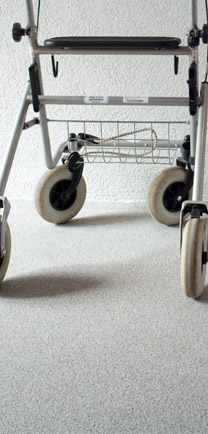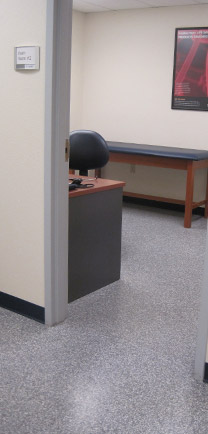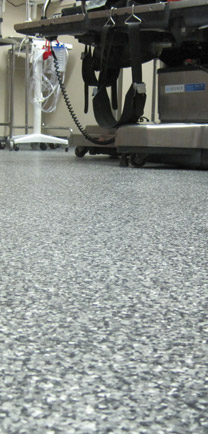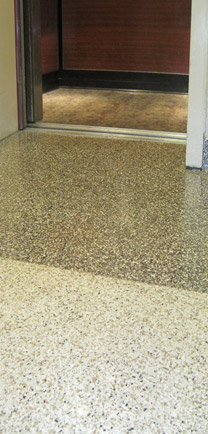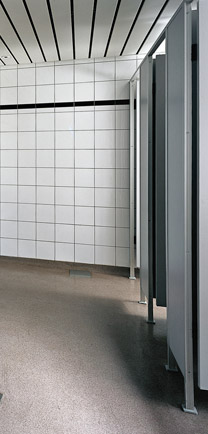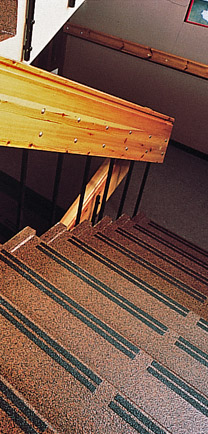Archive for September, 2013
Ambulatory Center Flooring
Specialty Flooring For Ambulatory Centers
Prior to discussing ambulatory center flooring, it should be made clear what an ambulatory center actually looks after. In many ways it is the same as a hospital; however the word ambulatory assumes that the patient can still walk on their own. Thus this type of center actually specializes in outpatient care which is accomplished all in one day.
Just as in a hospital the flooring must be of the type which can be maintained in a normal hospital setting. For instance an ambulatory center will usually contain outpatient registration, adult day care, prosthetics, physical rehabilitation and medicine, dental, hematology/oncology, speech and audiology pathology, an agent cashier’s office and finally an outpatient pharmacy. In addition it is common to have integrated behavioral health services, primary care, radiology, specialty care, and phlebotomy care.
However it is not just departments that are involved in having a special part of an ambulatory center, but also all the plans that need to apply for various floors and its flooring. For instance if special drainage needs arise to whisk away special fluids, those will be worked into the plans, or often there will be special flooring needs for perhaps the diagnostic, clinical, and even their administrative facilities. There are some ambulatory center flooring needs that are all the same and thus some centers choose to have the exact same flooring type and colors throughout the building. However there are some centers that choose to have different flooring or styles for each sector of their ambulatory center.
It is interesting to study what will be required of an ambulatory center with regard to specific flooring material. After all floor materials need to be easily cleaned and in addition need to have wear resistance commensurate with the particular location involved. When certain areas are present that require wet cleaning, then flooring materials need to be of the type that are not affected by strong cleaning solutions nor germicidal solutions. Also taken into consideration are the floor areas which will be utilized by those who are wet, such as those in shower areas, as each of those require non-slip surfaces.
As can be imagined the flooring needs to be completely non slip, especially in any areas where water may be utilized. Even the areas where the Doctors and nurses may cleanse to get ready for surgery will have to be especially treated to make sure of the non-slip character. Additionally, the operating room flooring must be slip resistant and hygienic. Sometimes there are special baths for those taking physical therapy, so waterproof flooring will also be needed.
Silikal has long been the answer for all such locations and is utilized in many large hospitals in every city in the Western world, as well as ambulatory centers. The flooring that Silikal makes has long been considered the best, as it is lifetime flooring. Silikal installers are always fully trained as to the special requirements needed by such users as ambulatory center flooring, and with Silikal even the interior decorators are pleased with the manner in which Silikal fits in as to style, color and also beauty. Silikal fits everywhere.
Cultural Center Flooring
Flooring For Cultural Centers
Often a cultural center will draw the populace therein due to the amazing beauty of the center itself, though most times it is a draw generally due to the public events held there. Often what happens is that the cultural center will see thousands of visitors in a year, and sometimes even over the course of months if it is a very attractive program. This means of course that damaging foot traffic will occur often. High traffic areas require heavy duty flooring.
More often than not, the center itself will be a stunning landmark building within the proud city. That means that it is not only the family events, art exhibitions, lectures, films, theater and dance events, or free music that is the only source of attraction, but even the building itself. Often impressive cultural center architecture has a following of its own. That is because frequently such buildings are created and designed to impress and turn into stunning landmarks for the city.
Sophistication is often the byword, utilizing sumptuous materials such as marble, mosaics, stained glass, mother-of-pearl, polished brass, and any other material that could be considered rich and in favor of sumptuousness. As can be imagined many cultural centers become a showcase for the many musicians, performers, local and regional artists as well as national and international performers who then try to dazzle and perhaps to outdo the physical beauty of each of these cultural centers.
With each cultural center trying to outdo the other city’s cultural center, it becomes vital that the very cultural center flooring be as impressive as possible. This is the reasoning why often such cultural centers use only Silikal for their special flooring.
A cultural center may serve wine, or at least soft drinks which may end up on the floor. This is over and above the foot traffic and thus some thought must be given to the cleanliness factor as well as to the ease of cleaning the cultural center flooring. Being easy to clean is after all essential, and nothing is as easy to clean and slip resistant as Silikal as it is all one piece, referred to as being monolithic. What that means to the average layman is that nothing will ever seep under it to fester beneath. Possibly more important is the fact that Silikal will absolutely remain seamless. Other flooring will develop cracks, fissures and other problems, but Silikal remains as beautiful as the day it was put down.
Of course, as mentioned above it is of extreme significance that the cultural center floor be beautiful as well as all the other necessities already mentioned. Beauty is definitely a byword when it concerns Silikal. The inherent beauty found in Silikal flooring is certainly welcome in such locations as cultural centers. After all only Silikal has the divergent colors and textures necessary to awe those who attend the cultural center. Often heard is the suggestion that cultural center goers come for the beauty of the center but are admonished to stay for the cultural events.

